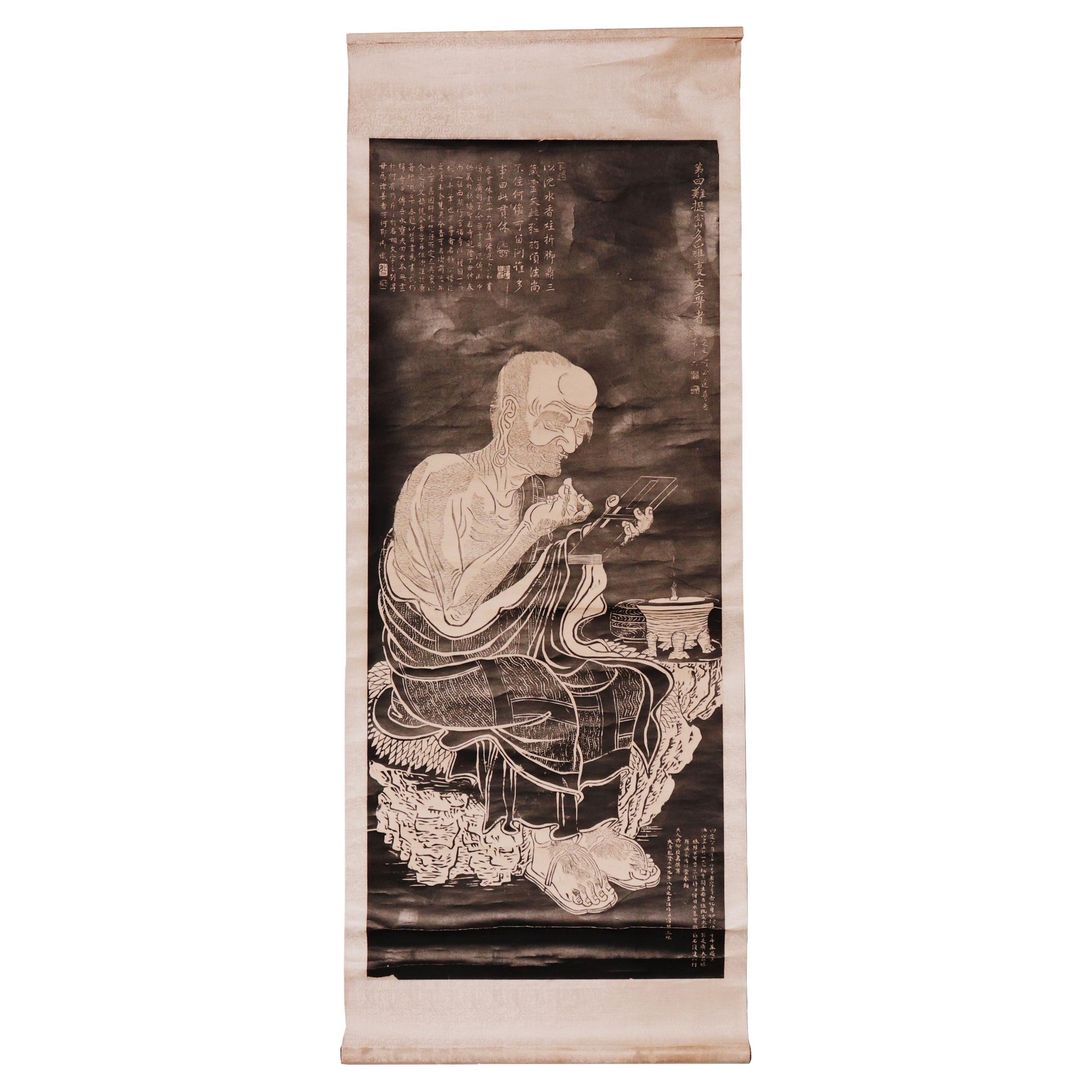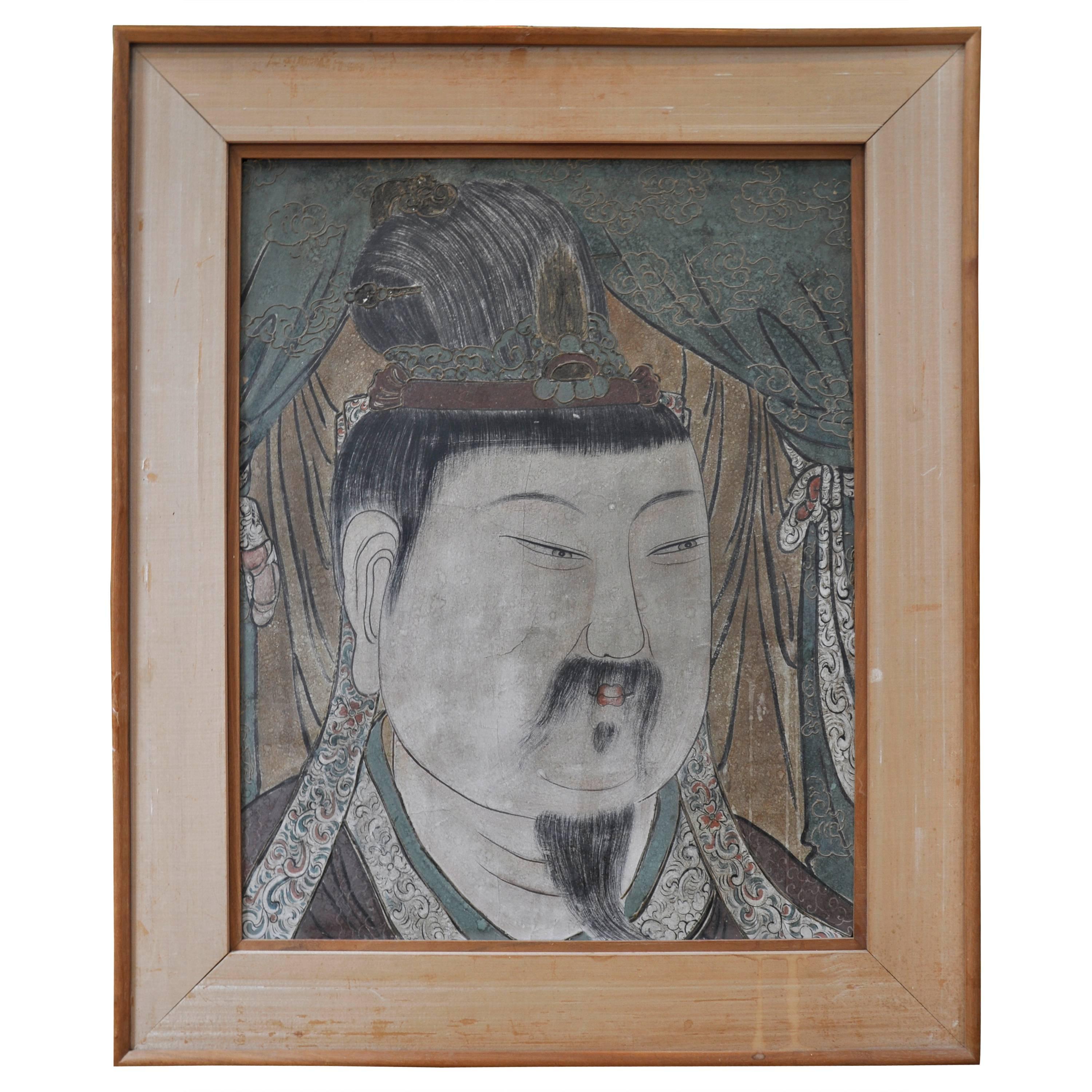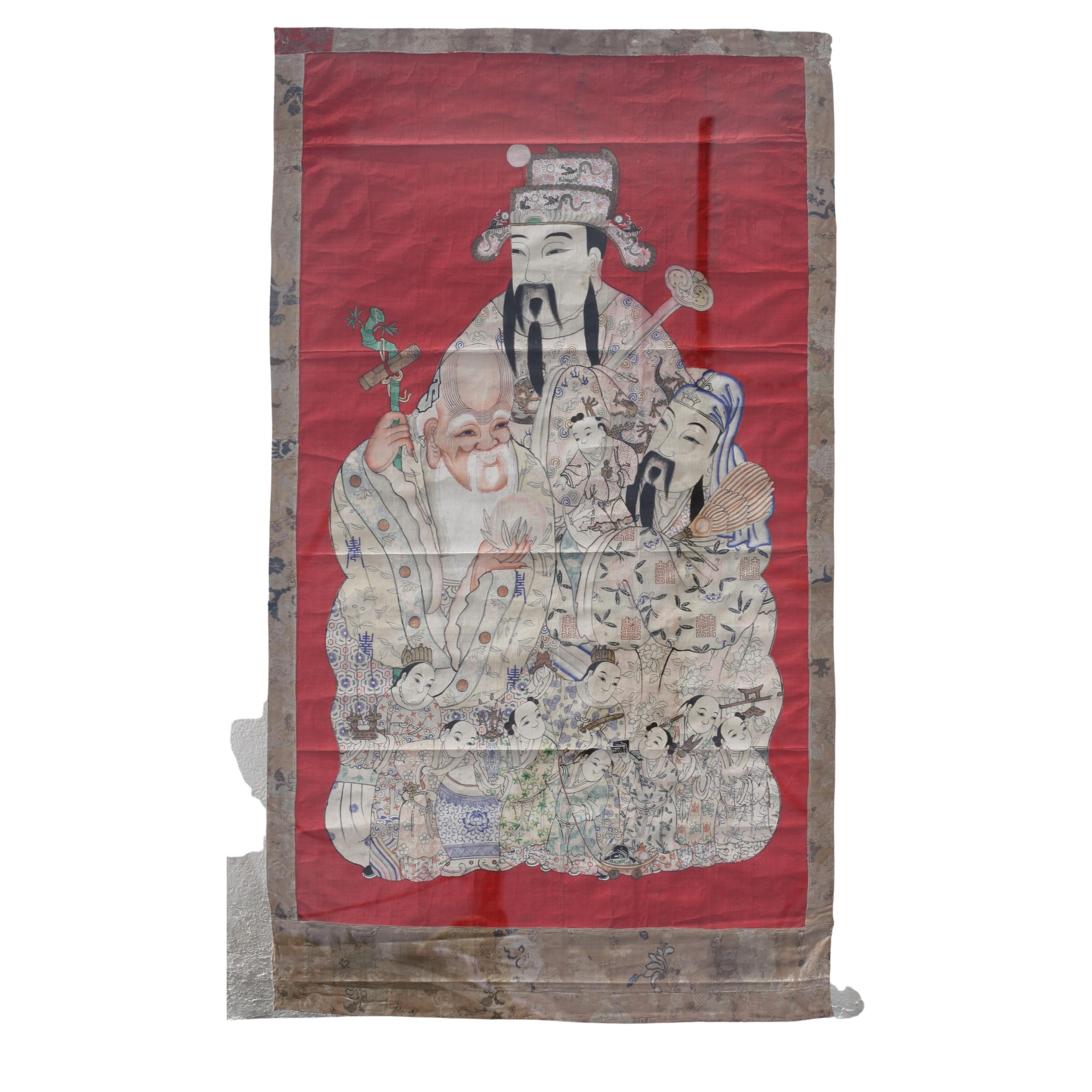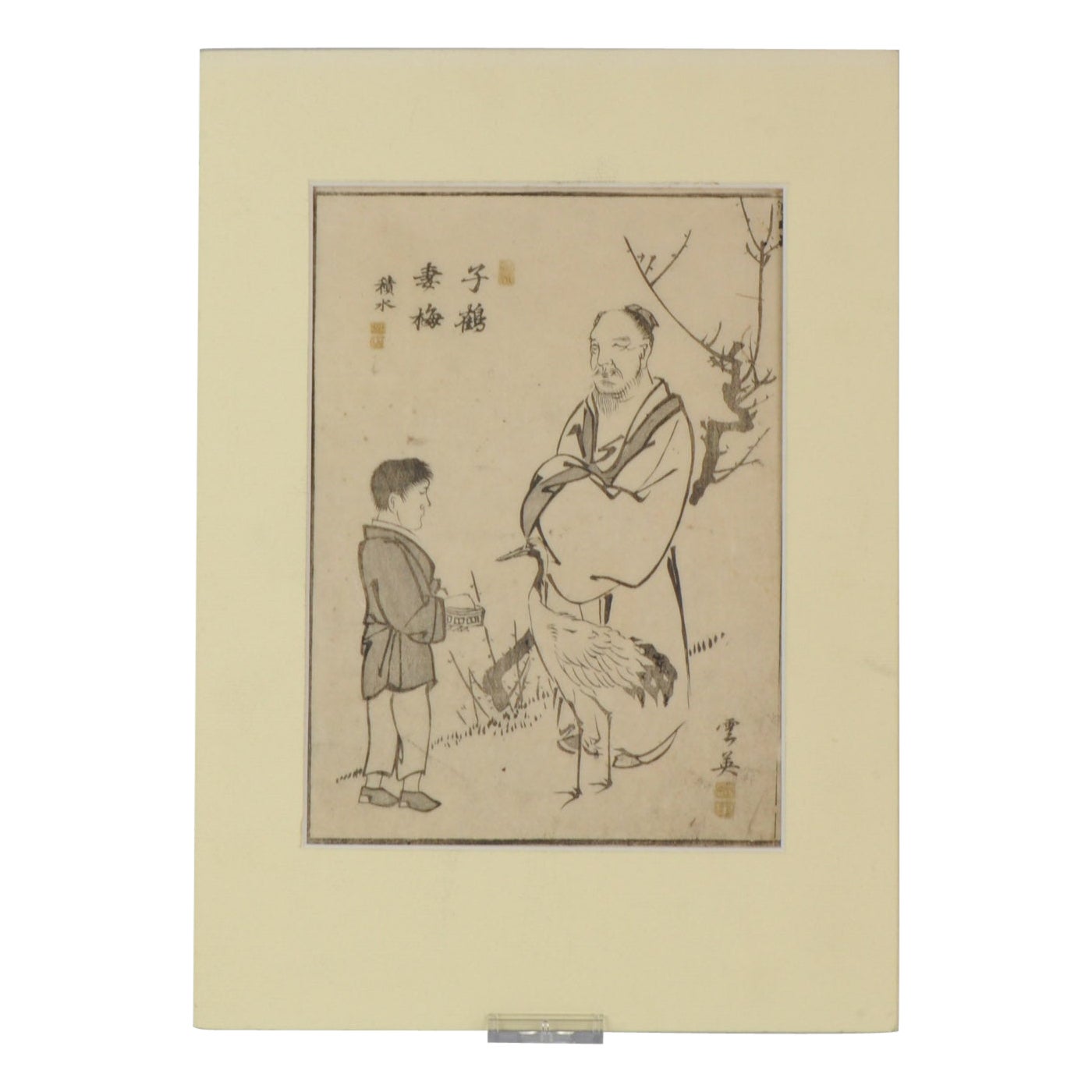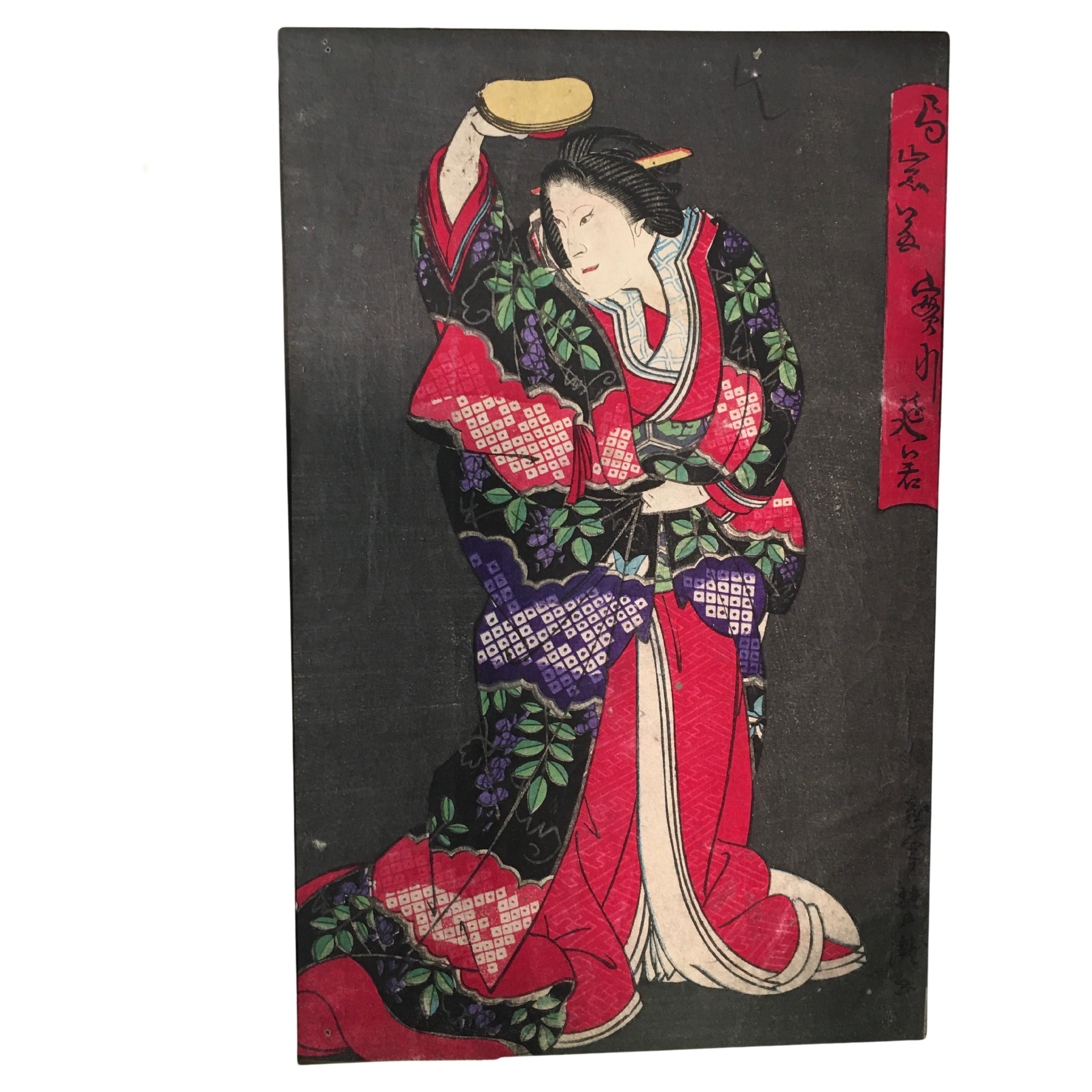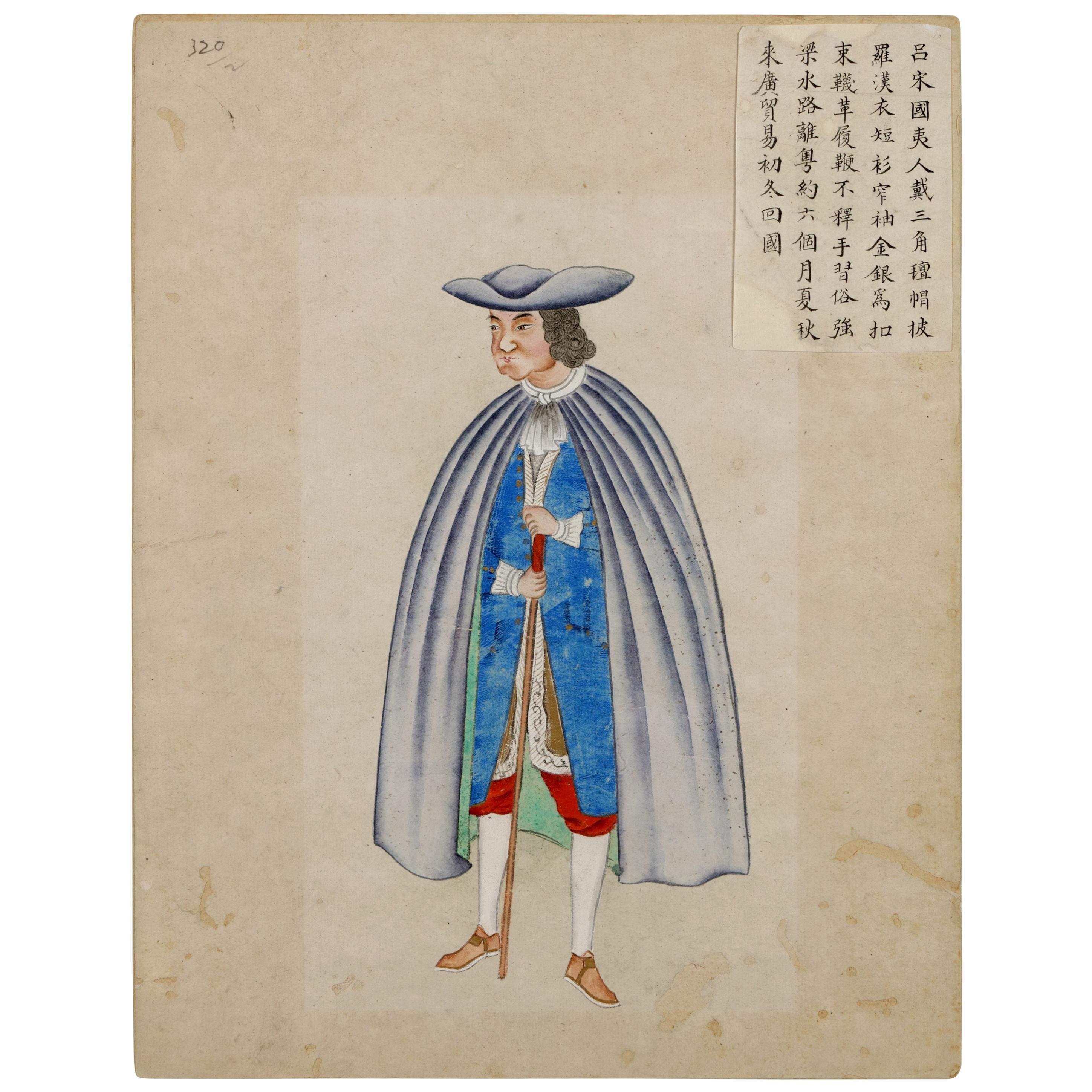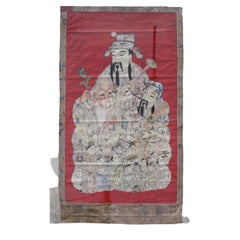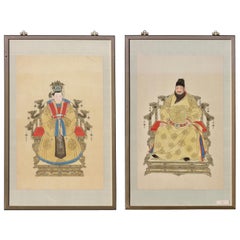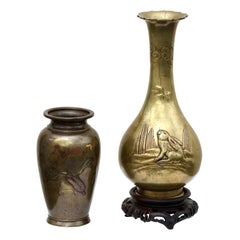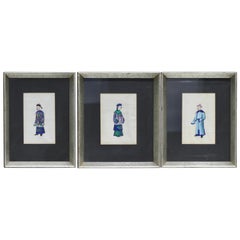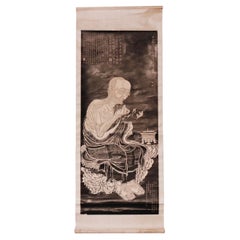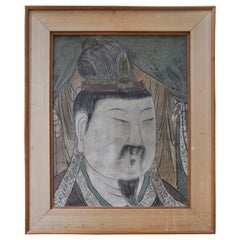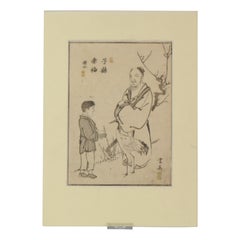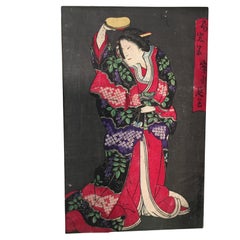Items Similar to Collection of Hand Drawn Rubbings of the Portraits of Luohans
Want more images or videos?
Request additional images or videos from the seller
1 of 11
Collection of Hand Drawn Rubbings of the Portraits of Luohans
$6,000
£4,587.32
€5,283.67
CA$8,407.84
A$9,386.56
CHF 4,918.42
MX$114,900.74
NOK 62,463.95
SEK 58,895.58
DKK 39,432.54
Shipping
Retrieving quote...The 1stDibs Promise:
Authenticity Guarantee,
Money-Back Guarantee,
24-Hour Cancellation
About the Item
A collection of hand drawn rubbings of the portraits of Luohans from original engraved stone tablets that were commissioned in 1764 by the Chinese emperor Qianlong. The engravings were done in tribute and as preservation of the remarkable paintings of renowned artist Guanxiu (832-912). They were housed in the Shengyin Temple of Qiantang (present day Hangzhou) that was destroyed, along with its contents and the paintings, during the Taiping Rebellion of the mid-19th century. The tablets mounted like facets into a marble stupa remained unharmed during the rebellion. Rubbings were commissioned from these stones from the latter half of the 19th century to the early 20th century. As these stones are important cultural property, it is our understanding that rubbings are no longer permitted, to preserve the stones for all posterity.
Measuring 52 in. (132.08 cm.) high by 26.75 in. (67.94 cm.) wide, or 45 in. (114.3 cm.) high by 20 in. (50.8 cm.) wide unframed. 2. Kanakavatsa Arhat – Happy Luohan 3. Kanaka Bharadraja Arhat – Raised Bowl Luohan complete image, tissue separation 4. Nandimitra Arhat – Raised Pagoda Luohan 5. Nakula (Pakula) Arhat – Meditating Luohan 6. Bhadra (Bodhi Dharma) Arhat – Overseas Luohan minor frayed edge 8. Arhat Vijraputra – Laughing Lion Luohan 9. Gobaka (Jivaka) Arhat – Open Heart Luohan11. Rahula Arhat – Thinking Luohan.
- Dimensions:Height: 52 in (132.08 cm)Width: 26 in (66.04 cm)Depth: 0.5 in (1.27 cm)
- Materials and Techniques:
- Period:
- Date of Manufacture:20th Century
- Condition:
- Seller Location:West Palm Beach, FL
- Reference Number:1stDibs: LU3860132105502
About the Seller
5.0
Vetted Professional Seller
Every seller passes strict standards for authenticity and reliability
Established in 1989
1stDibs seller since 2018
114 sales on 1stDibs
Typical response time: 10 hours
- ShippingRetrieving quote...Shipping from: West Palm Beach , FL
- Return Policy
Authenticity Guarantee
In the unlikely event there’s an issue with an item’s authenticity, contact us within 1 year for a full refund. DetailsMoney-Back Guarantee
If your item is not as described, is damaged in transit, or does not arrive, contact us within 7 days for a full refund. Details24-Hour Cancellation
You have a 24-hour grace period in which to reconsider your purchase, with no questions asked.Vetted Professional Sellers
Our world-class sellers must adhere to strict standards for service and quality, maintaining the integrity of our listings.Price-Match Guarantee
If you find that a seller listed the same item for a lower price elsewhere, we’ll match it.Trusted Global Delivery
Our best-in-class carrier network provides specialized shipping options worldwide, including custom delivery.More From This Seller
View AllChinese Ink and Colour on Fabric Painting, "Emperor"
Located in West Palm Beach, FL
Chinese ink and colour on fabric
Painting,
"Emperor"
Qing Dynasty, set within two lucite panels
Measures: The painting 87 by 151 cm., 34.5 by 59.5 in.,
Please note that this l...
Category
20th Century Paintings and Screens
Materials
Silk
Portraits of a Ming Dynasty Emperor and Empress, Chinese Ink and Color on Paper
Located in West Palm Beach, FL
Portraits of a Ming dynasty Emperor and Empress, Chinese
ink and color on paper,
Measures: Framed: Height 50 in. (127 cm.), width 31.5 in. (80.01 cm.)
Without frame: Height 38.5 i...
Category
20th Century Paintings and Screens
Materials
Paper
$2,320 Sale Price
20% Off
Three Antique Japanese Works of Art
Located in West Palm Beach, FL
Three Antique Japanese Works of Art
An oribe "morikage" (for the display of seasonal fruits), classic green drip glaze with spontaneous ink pain...
Category
Antique 1890s Ceramics
Materials
Porcelain
Three Chinese Watercolors, 19th Century
Located in West Palm Beach, FL
Three Chinese Watercolors
19th Century
each titled on verso
Inferior Mandarin
Governer General, his lady
Prime Minister
size with frame
9 by 12 inches
...
Category
Antique 19th Century Paintings and Screens
Materials
Paint
Pair of Large Antique Japanese Paintings
Located in West Palm Beach, FL
A pair of large antique Japanese paintings of Cockerel and Hen with chicks among timber bamboo. Mounted in the single panel screen panel styl...
Category
Antique 1880s Paintings and Screens
Materials
Silk
Painting of Guanyin Qing Dynasty 19/20th Century Color on Silk
Located in West Palm Beach, FL
A painting of Guanyin
Qing Dynasty 19/20th century
color on silk;
The deity depicted floating, attired in long robes, adorned with jewels and wearing...
Category
20th Century Paintings and Screens
Materials
Silk
You May Also Like
Antique Chinese Printed Ink Rubbing of Panthaka Arhat, (scroll mounted)
Located in Point Richmond, CA
Chinese ink rubbing printing depicting Panthaka Arhat, no.4 of the 16 arhat images immortalized in stone at the former stupa at Shengyin Temple. Depicted here sitting on a rock with a book in his left hand and snapping his fingers in his right hand, symbolic of the speed at which he obtained enlightenment, accompanied by a beggar’s bowl and an incense burner, complete with colophons and silk scroll mounting. The Emperor Qianlong ordered the stone stele to be carved in 1764 after the arhat designs painted by the famed artist Guanxiu (832-912). Even though the temple was destroyed in the Taiping rebellion, the steles remain and have been reinstalled at the Hangzhou Stele Forest. Condition: Creases from rolling, otherwise fine condition. Mounting: 58” x 22”. 19th Century. Ex Collection: Frank “Till” & Peggy Durdin, San Diego.
For other rubbings of this stele see:
Penn Museum, object number 2010-26-4
The Metropolitan Museum of Art AN#: 59.195.15
Fine Arts Library of Harvard University, record id: W280021_urn-3:FHCL:478850
For another example of this image rendered in jade and lacquer see: “Screen Paintings of Guanxiu’s Sixteen Arhats in the Collection of the Palace Museum” Luo Wehhua translated by Bruce Doar, Orientations, September 2010, p. 104. In this article the image is identified as the sixteenth arhat Abheda, It is explained in this article that Qianlong re-identified the arhats, thus the 16th Arhat attribution for this image. Also in this article the identical colophon by Qianlong above the image is translated as: “These accurate portraits of the Sixteen Arhats were created by the Tang Dynasty painter Guanxiu, as recorded in Xuanhe Huapu (Record of paintings in the Xuanhe Reign), and during the millennium from the Guangming reign period to the present day, the original works were to be found in Zhejiang, where they were housed in the collection of Shengyin Temple in Qiantang (Huangzhou). In spring of the dingchou year (1757) of his reign, the Qianlong emperor undertook a southern tour of inspection and stayed at an imperial lodge on the West Lake. He went to the temple to pay his respects and there he saw the arhats on display and wrote a description of these marvels. The sequence of the arhats and their names had been passed down since ancient times, but they did not correspond to their Sanskrit titles; the sequence of the arhat names conformed instead to the interpretation of the Sanskrit classics by the Zhangjia State Preceptor. The emperor penned the original names and positions in the sequence below each of the figures in accordance with the readings supplied in Tongwen Yuntong (Unified Rhymes), and below each he penned an encomium, which he signed. Then the images were returned to the collection, to be passed down as a perpetual treasure. Now, the fourth great arhat had long gone missing and we did not know where his painting was. But it was merely a trifling matter of matching the images with the names, and now surely we have found him! This I, the emperor, believe.”
All 16 of these rubbings can be found in the Rubel Chinese Rubbings Collection at the Fine Arts Library of Harvard University with the following descriptive historical note: “Rubbing from stele depicting No. 4 of 16 arhats (Lohans, Buddhist saints) -- Nan ti mi duo luo qing you, Panthaka Arhat. Original painting attributed to Guanxiu, 832-912. Inscriptions written by Hongli, Emperor Qianlong (Gaozong, 1711-1799) of Qing Dynasty. 7 seals of Qianlong follow the inscriptions. Script style: in xing shu. Shi liu zun zhe -- "The 16 noble ones" are 16 lohans. Lohans are also called "a-lo-han" based on the transliteration of the Sanskrit term "arhat." (Japanese: Rakan; Chinese: Lohan; Tibetan: Gnas-brtan). Arhats or Arahants are saints or sages said to have renounced nirvana (freedom from the cycle of suffering and rebirth), vowed to remain in the world to protect the Dharma and propagate the Law of the Buddha in order to devote themselves more effectively to the relief of human misery, like the Bodhisattvas. These 16 Arhats, personal disciples distinguished by the Buddha, formed part of the 500 claimed by tradition to have attended the First Council in Rajagrha. The names and abodes of these 16 arhats are given in a work entitled "Record on the Duration of the Law, spoken by the Great arhat Nadimitra," which was translated into Chinese by the famous pilgrim Xuanzang (596-664) in 654. 16 lohans are quite often represented, especially in China and Japan, in sculpture and painting, in poses and with attributes. Every lohan can be easily with special icongraphic characteristics. Guanxiu (Jiang Deyin or Deyuan, a Buddhist monk also named Master Chan Yue, 832-912) -- painter during late Tang to Five Dynasties, specialized in painting lohan figures. Legend has it that the first portraits of the 18 Lohans...
Category
Antique 19th Century Chinese Qing Prints
Materials
Paper
19th Century Chinese Painting
Located in Dallas, TX
Imperial portrait on paper.
Category
Antique 18th Century Chinese Other Paintings and Screens
Materials
Paint
Very Fine Chinese Woodblock Print China Antique, 19th Century
Located in Amsterdam, Noord Holland
Interesting and finely made print
Interesting and finely painted Chinese Silk painting.
Additional information:
Material: Porcelain & Pottery
Type: Paintings, Scrolls & Prints
Regio...
Category
Antique 19th Century Chinese Prints
Materials
Porcelain
$255 Sale Price
20% Off
Period Japanese Ink Drawing Gheisha
Located in Roma, IT
Fascinating and important oriental coloured drawing
Japanese Gheisha.
Every item of our Gallery, upon request, is accompanied by a certificate of authenticity issued by Sabrina Egidi...
Category
Antique Late 19th Century Japanese Japonisme Paintings and Screens
Materials
Paper
$850 Sale Price
40% Off
Five Extremely Rare Chinese Drawings of Foreigners, 18th Century, Colonial
Located in Amsterdam, NL
Five Chinese paintings of western people by an unknown artist
China, circa 1760, captions later
All in giltwood frames.
“A woman with Portuguese hairdo, with gold, silver and gemstone necklace, a skirt under a vest, a koi on her back, called a cloak, a woman customarily inherited the family business, the male humble, to the threshold (Qianlong year, circa 1735).”
Gouache on silk, measures: 32 x 25.4 cm
“He is a Westerner who had a white skin. He does not have a heavy beard but plaits his hair. He wears a triangular black hat, short jacket, leather shoes and long stockings...
Category
Antique Mid-18th Century Chinese Chinese Export Paintings and Screens
Materials
Paper
Selections from the Paintings and Calligraphy Donated to the Shanghai Museum fro
Located in valatie, NY
Selections from the Paintings and Calligraphy Donated to the Shanghai Museum from the Ching Banlee Liangtuxuan Collection. Published by Shanghai Museum, Shangahai, China, 2002. 1st E...
Category
Early 2000s Chinese Books
Materials
Paper
More Ways To Browse
Chinese Painting Stone
Black Stone Bowl
Midcentury Marble Bowl
Pagoda Painting
Stone Pagoda
Chinese Emperor Painting
Chinese Screen Stone
Qianlong Bowl
Stone Lion Chinese
Temple Bowl
Chinese Luohan
Chinese Marble Lion
Temple Rubbing
Edo Period Gold
Chinese Painting On Silk
Asian Antique Landscape Paintings
Japanese Lacquer Panels
Antique Japanese Seals
